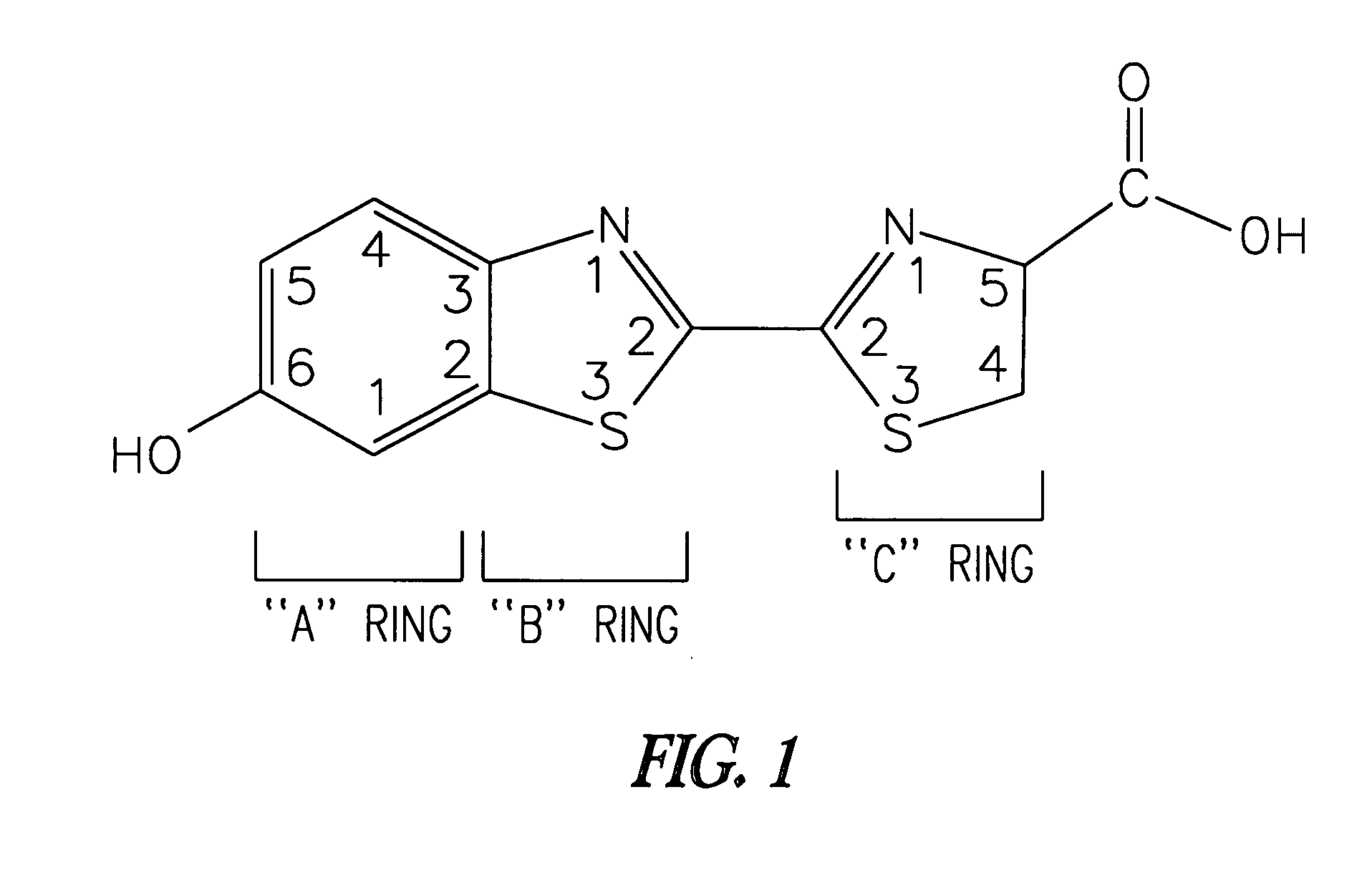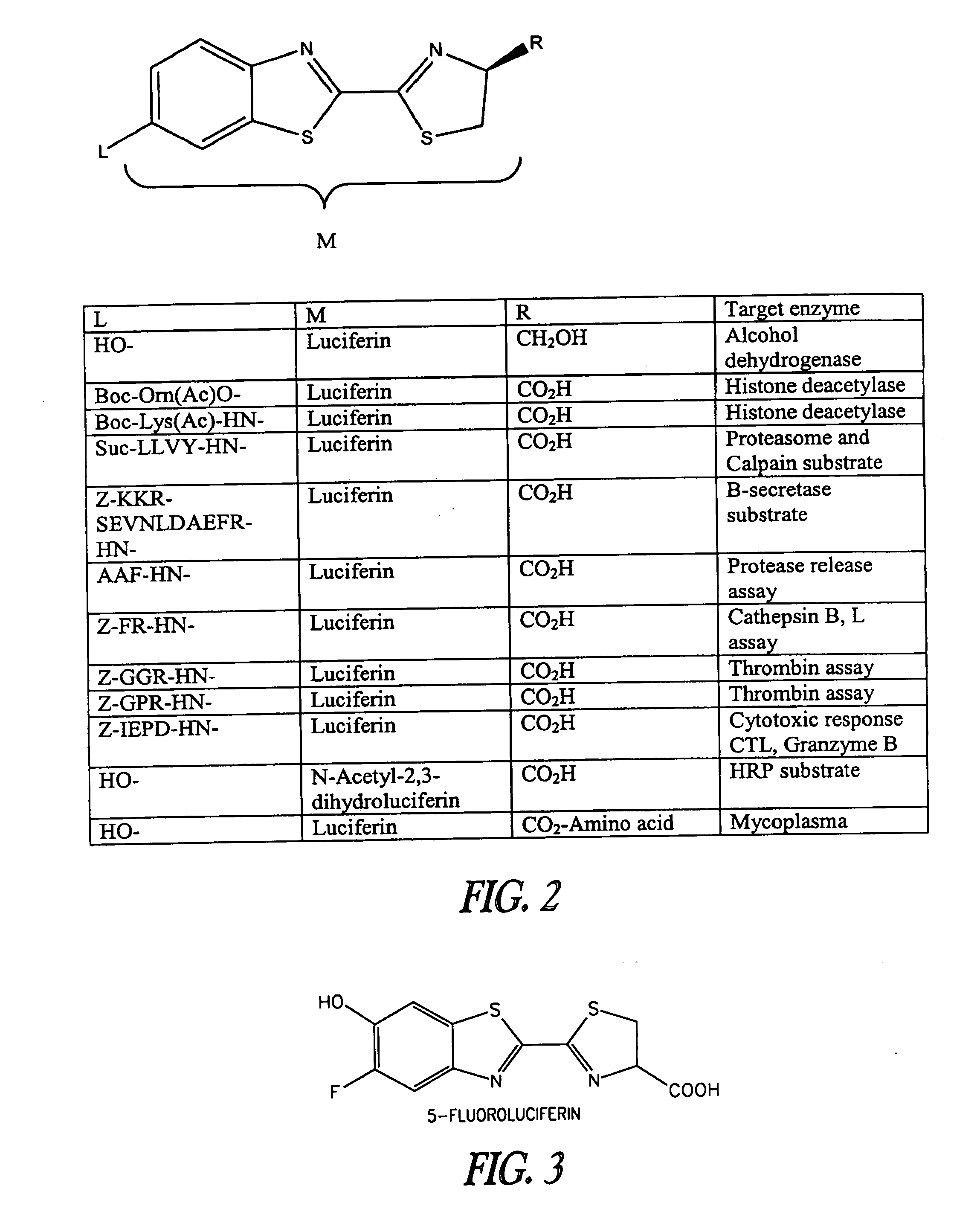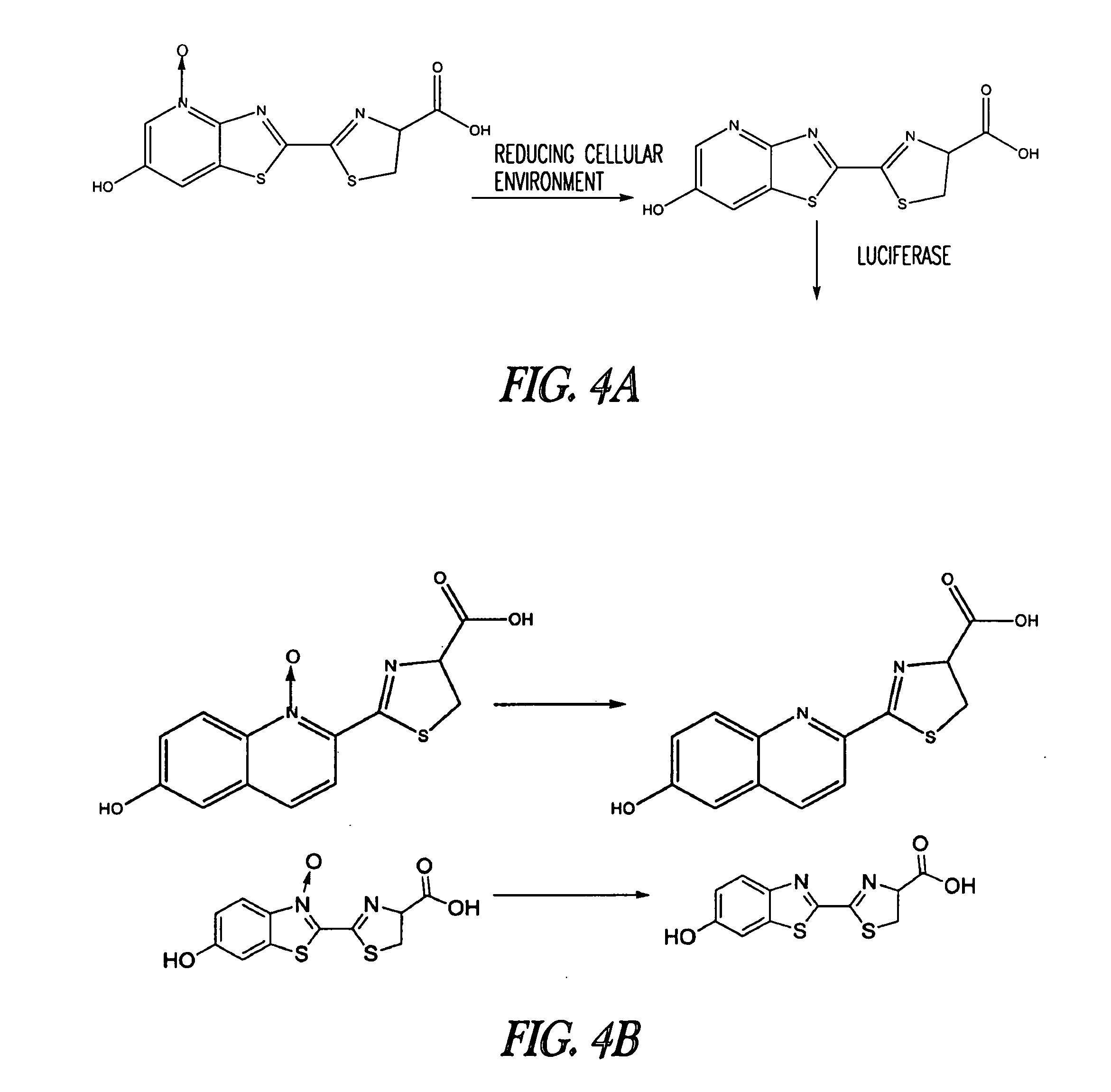Luminogenic and fluorogenic compounds and methods to detect molecules or conditions
a technology of fluorogenic compounds and molecules, applied in the field ofluminogenic and fluorogenic compounds and methods to detect molecules or conditions, can solve the problems of limited development of such a luciferase-mediated reaction as the basis for such enzymatic or biological assays, and achieve the effect of effective stabilizing the luminescence of the reaction
- Summary
- Abstract
- Description
- Claims
- Application Information
AI Technical Summary
Benefits of technology
Problems solved by technology
Method used
Image
Examples
example 1
Measurement of Glutathione S Transferase Activity or Glutathione with Luciferin Derivatives
A. Assay at pH 6.6
[1075] A luciferin derivative, GST #3, was prepared as a substrate for GST. The derivative was tested in a two step format. For the first step, the derivative was added to a mixture with one of three GSTs with or without glutathione. At different times after the reaction was initiated, a portion was removed and mixed with a luciferase reaction mixture. Reactions in which light production increased over time indicate that GST#3 is a substrate for the GST in that reaction.
Materials and Methods
[1076] Equine GST Solution: 25 mg of equine GST (Part G 6511, Sigma Chemical Company, St. Louis, Mo.) was dissolved in 5 ml of 10 mM BisTris buffer, pH 6.6. Porcine GST Solution: 10 mg of porcine GST (Sigma Chemical Company G 6636) was dissolved in 2 ml of 10 mM BisTris, pH 6.6. S. japonica GST: 1 vial with 3 mg GST (Part G5663, Sigma Chemical Company) was dissolved in 500 μl of 10 m...
example 2
A. Detection of Equine Alcohol Dehydrogenase
[1123] A luciferin derivative, luciferol, was employed as a substrate for alcohol dehydrogenase (ADH). The derivative was tested in a two step format. For the first step, the derivative was added to a mixture with one of four ADHs. At different times after the reaction was initiated, a portion was removed and mixed with a luciferase reaction mixture. Reactions in which light production increased over time indicate that luciferol is a substrate for the ADH in that reaction.
Materials and Methods
[1124] A solution of 500 mM Bis Tris, pH 6.5 was created by dissolving the solid and adjusting the pH to pH 6.5. A 50 mM solution was then made from this stock by dilution with water.
[1125] Al DH solution: 25 units of aldehyde dehydrogenase (Sigma Chemical Co, A-6338) was dissolved in 1 ml of 50 mM Bis Tris, pH 6.5.
[1126] Eq ADH solution: 20 units of equine alcohol dehydrogenase (Sigma Chem. Co., A9589) was dissolved in 1 ml of 50 mM Bis Tris, ...
example 3
MAO and FMO Assays with Derivatives of the Invention
A. Luciferin Derivatives for MAO Assays
[1151] A series of luciferin derivatives was prepared as substrates for monoamine oxidases (MAO), and those substrates tested in two step assays with different types of MAO (MAO A and MAO B). Additional assays were conducted with test compounds to determine whether the compound inhibited the MAO mediated reaction. Also, as described hereinbelow, fluorogenic MAO substrates were prepared and tested in a one step assay. The bioluminogenic and fluorogenic MAO substrates may be oxidized by monoamine oxidase (MAO) A and / or B, e.g., to produce iminium and / or aldehyde intermediates that may undergo a secondary β-elimination to liberate 7-hydroxyluciferins or a derivative thereof, or hydroxy fluorescent products including umbelliferone, fluorescein, and their derivatives. The formation of these products is measured by light output from bioluminescence, where the product of the reaction between MAO a...
PUM
 Login to View More
Login to View More Abstract
Description
Claims
Application Information
 Login to View More
Login to View More - R&D
- Intellectual Property
- Life Sciences
- Materials
- Tech Scout
- Unparalleled Data Quality
- Higher Quality Content
- 60% Fewer Hallucinations
Browse by: Latest US Patents, China's latest patents, Technical Efficacy Thesaurus, Application Domain, Technology Topic, Popular Technical Reports.
© 2025 PatSnap. All rights reserved.Legal|Privacy policy|Modern Slavery Act Transparency Statement|Sitemap|About US| Contact US: help@patsnap.com



